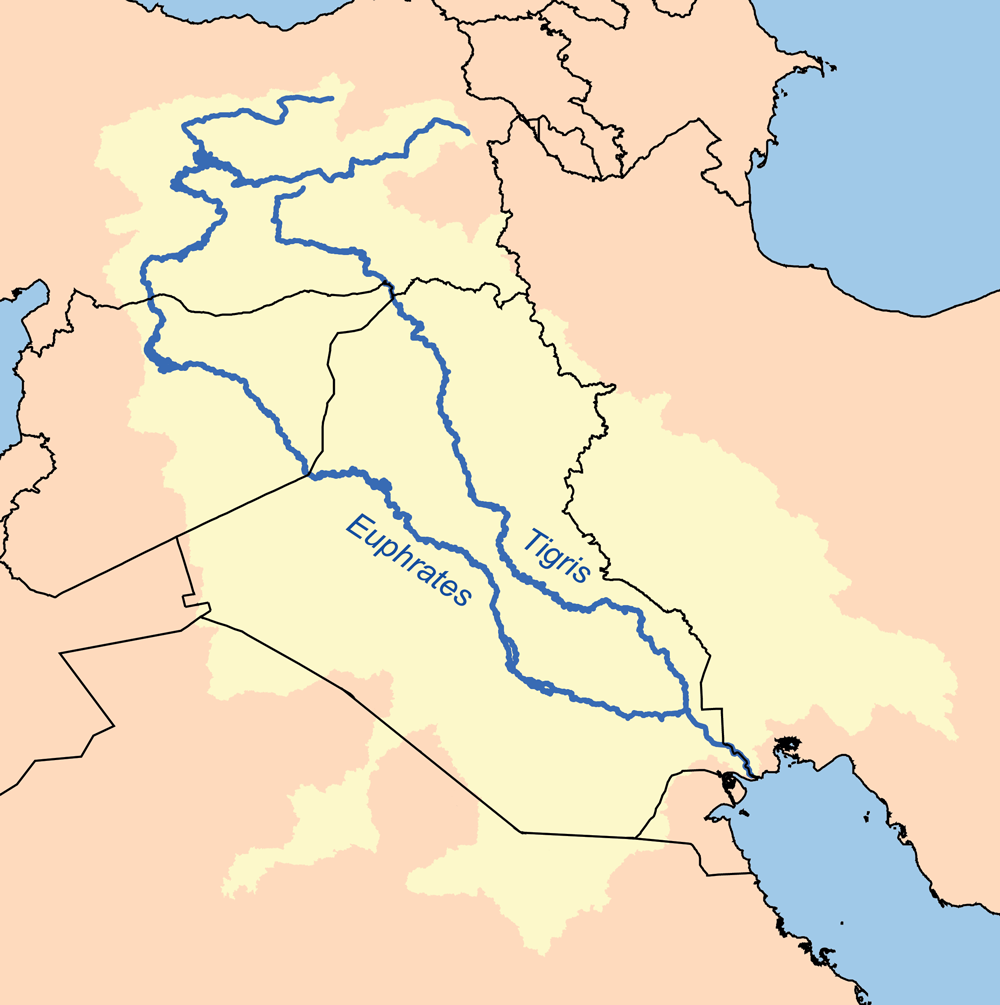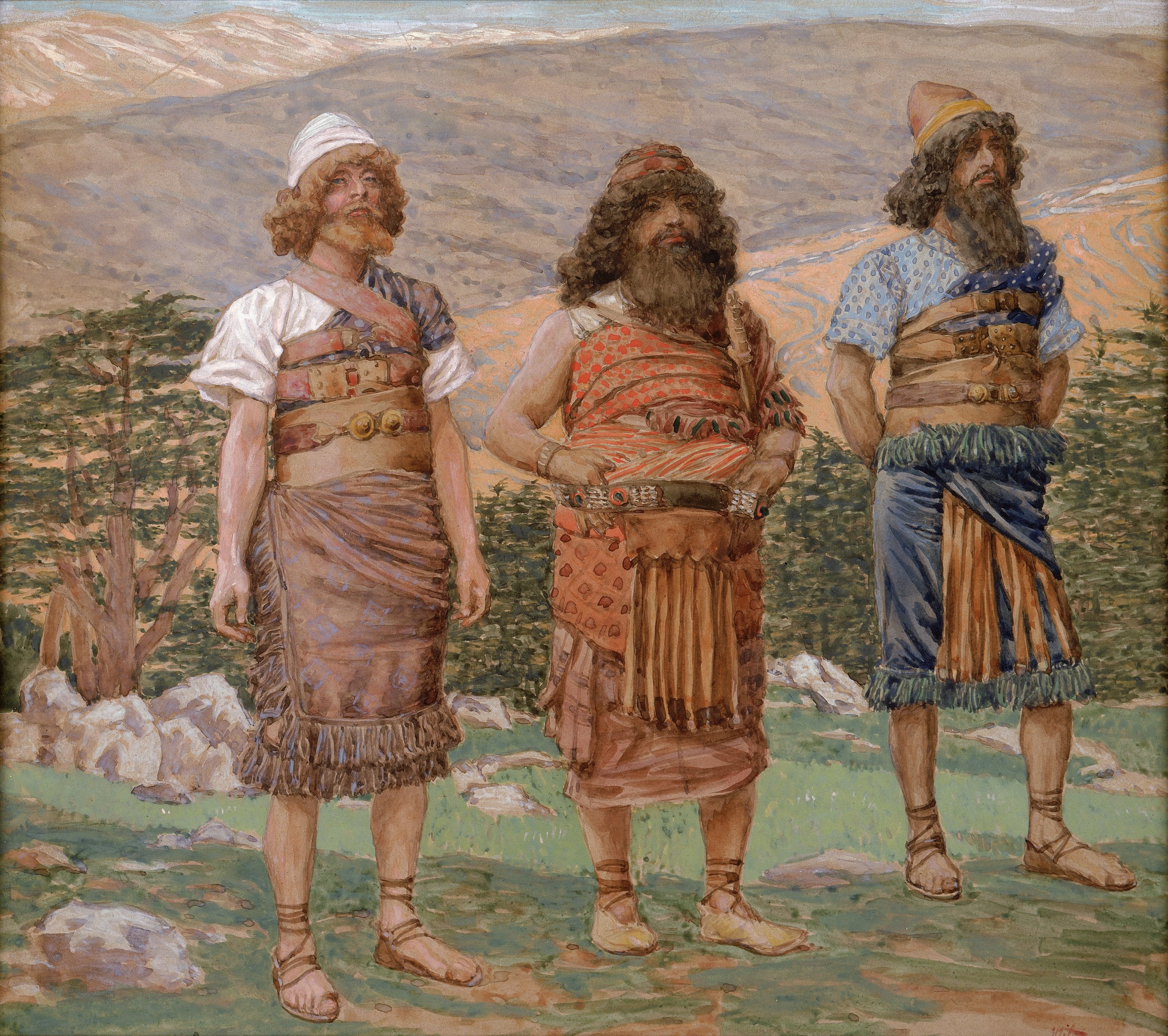|
Mandaeanism
Mandaeism ( Classical Mandaic: ࡌࡀࡍࡃࡀࡉࡉࡀ ; Arabic: المندائيّة ), sometimes also known as Nasoraeanism or Sabianism, is a Gnostic, monotheistic and ethnic religion. Its adherents, the Mandaeans, revere Adam, Abel, Seth, Enos, Noah, Shem, Aram, Jesus and especially John the Baptist. Mandaeans consider Adam, Seth, Noah, Shem and John the Baptist prophets with Adam being the founder of the religion and John being the greatest and final prophet. The Mandaeans speak an Eastern Aramaic language known as Mandaic. The name 'Mandaean' comes from the Aramaic '' manda'', meaning knowledge. Within the Middle East, but outside their community, the Mandaeans are more commonly known as the (singular: ), or as Sabians (, ). The term is derived from an Aramaic root related to baptism. The term Sabians derives from the mysterious religious group mentioned three times in the Quran alongside the Jews, the Christians and the Zoroastrians as a 'People of the Book', ... [...More Info...] [...Related Items...] OR: [Wikipedia] [Google] [Baidu] |
Gnosticism
Gnosticism (from grc, γνωστικός, gnōstikós, , 'having knowledge') is a collection of religious ideas and systems which coalesced in the late 1st century AD among Judaism, Jewish and Early Christianity, early Christian sects. These various groups emphasized personal spiritual knowledge (''gnosis'') above the orthodox teachings, traditions, and authority of religious institutions. Gnostic cosmogony generally presents a distinction between a supreme, hidden God and a malevolent demiurge, lesser divinity (sometimes associated with the Yahweh of the Old Testament) who is responsible for creating the nature, material universe. Consequently, Gnostics considered material existence flawed or evil, and held the principal element of salvation to be direct knowledge of the hidden divinity, attained via mystical or esoteric insight. Many Gnostic texts deal not in concepts of sin and repentance, but with illusion and Enlightenment (spiritual), enlightenment. Gnostic writings flou ... [...More Info...] [...Related Items...] OR: [Wikipedia] [Google] [Baidu] |
Mandaeans
Mandaeans ( ar, المندائيون ), also known as Mandaean Sabians ( ) or simply as Sabians ( ), are an ethnoreligious group who are followers of Mandaeism. They believe that John the Baptist was the final and most important prophet. They may have been among the earliest religious groups to practice baptism, as well as among the earliest adherents of Gnosticism, a belief system of which they are the last surviving representatives today. The Mandaeans were originally native speakers of Mandaic, an Eastern Aramaic language, before they nearly all switched to Iraqi Arabic or Persian as their main language. After the invasion of Iraq by the United States and its allies in 2003, the Mandaean community of Iraq, which before the war numbered 60,000-70,000 persons, collapsed due to the rise of Islamic extremism and the absence of protection against it; with most of the community relocating to Iran, Syria and Jordan, or forming diaspora communities beyond the Middle East. Man ... [...More Info...] [...Related Items...] OR: [Wikipedia] [Google] [Baidu] |
Monotheism
Monotheism is the belief that there is only one deity, an all-supreme being that is universally referred to as God. Cross, F.L.; Livingstone, E.A., eds. (1974). "Monotheism". The Oxford Dictionary of the Christian Church (2 ed.). Oxford: Oxford University Press. A distinction may be made between exclusive monotheism, in which the one God is a singular existence, and both inclusive and pluriform monotheism, in which multiple gods or godly forms are recognized, but each are postulated as extensions of the same God. Monotheism is distinguished from henotheism, a religious system in which the believer worships one God without denying that others may worship different gods with equal validity, and monolatrism, the recognition of the existence of many gods but with the consistent worship of only one deity. The term '' monolatry'' was perhaps first used by Julius Wellhausen. Monotheism characterizes the traditions of Bábism, the Baháʼí Faith, Cheondoism, Christianity,Christ ... [...More Info...] [...Related Items...] OR: [Wikipedia] [Google] [Baidu] |
Ginza Rabba
The Ginza Rabba ( myz, ࡂࡉࡍࡆࡀ ࡓࡁࡀ, translit=Ginzā Rbā, lit=Great Treasury), Ginza Rba, or Sidra Rabba ( myz, ࡎࡉࡃࡓࡀ ࡓࡁࡀ, translit=Sidrā Rbā, lit=Great Book), and formerly the Codex Nasaraeus, is the longest and the most important holy scripture of Mandaeism. It is also occasionally referred to as the Book of Adam. Language, dating and authorship The language used is Classical Mandaic, a variety of Eastern Aramaic written in the Mandaic script (Parthian chancellory script), similar to the Syriac script. The authorship is unknown, and dating is a matter of debate. Some scholars place it in the 2nd–3rd centuries,Drower, Ethel Stefana (1937). The Mandaeans of Iraq and Iran. Oxford At The Clarendon Press. while others such as S. F. Dunlap place it in the 1st century. The earliest confirmed Mandaean scribe was ''Shlama Beth Qidra'', a woman, who copied the ''Left Ginza'' sometime around the year 200 CE. Mandaean religious texts may have been o ... [...More Info...] [...Related Items...] OR: [Wikipedia] [Google] [Baidu] |
Aramaic
The Aramaic languages, short Aramaic ( syc, ܐܪܡܝܐ, Arāmāyā; oar, 𐤀𐤓𐤌𐤉𐤀; arc, 𐡀𐡓𐡌𐡉𐡀; tmr, אֲרָמִית), are a language family containing many varieties (languages and dialects) that originated in the ancient region of Syria. For over three thousand years, It is a sub-group of the Semitic languages. Aramaic varieties served as a language of public life and administration of ancient kingdoms and empires and also as a language of divine worship and religious study. Several modern varieties, namely the Neo-Aramaic languages, are still spoken in the present-day. The Aramaic languages belong to the Northwest group of the Semitic language family, which also includes the Canaanite languages such as Hebrew, Edomite, Moabite, and Phoenician, as well as Amorite and Ugaritic. Aramaic languages are written in the Aramaic alphabet, a descendant of the Phoenician alphabet, and the most prominent alphabet variant is the Syriac alphab ... [...More Info...] [...Related Items...] OR: [Wikipedia] [Google] [Baidu] |
Eastern Aramaic Languages
The Eastern Aramaic languages have developed from the varieties of Aramaic that developed in and around Mesopotamia (Iraq, southeast Turkey, northeast Syria and northwest and southwest Iran), as opposed to western varieties of the Levant (modern Levantine Syria and Lebanon). Most speakers are ethnic Assyrians, although there are a minority of Kurdish Jews and Mandaeans, who also speak varieties of Eastern Aramaic. Speakers Numbers of fluent speakers range from approximately 575,000 to 1,000,000, with the main languages being Assyrian Neo-Aramaic (235,000 speakers), Chaldean Neo-Aramaic (216,000 speakers) and Surayt/Turoyo (250,000 speakers), together with a number of smaller closely related languages with no more than 5,000 to 10,000 speakers between them. Despite their names, they are not restricted to specific churches; Chaldean Neo-Aramaic being spoken by members of the Chaldean Catholic Church, Assyrian Church of the East, Syriac Orthodox Church, Assyrian Protestant chur ... [...More Info...] [...Related Items...] OR: [Wikipedia] [Google] [Baidu] |
Last Prophet
The last prophet, or final prophet, is a term used in religious contexts to refer to the last person through whom God speaks, after which there is to be no other. The appellation also refers to the prophet who will induce mankind to turn back to God. Abrahamic religions Judaism Judaism considers Malachi to be the last of the biblical prophets, but believes that the Messiah will be a prophet and that there will possibly be other prophets alongside him. Christianity In Christianity, the last prophet of the Old Covenant before the arrival of Jesus is John the Baptist (cf. ). The Eastern Orthodox Church holds that Malachi was the "Seal of Prophets" in the Old Testament. Christian denominations who hold that spiritual gifts (including prophecy) continue to be bestowed by the Holy Spirit on Christians are known as " continuationists" (including Catholics, Methodists, and Pentecostals), while the cessationist perspective, which teaches that charismata ended in the Apostolic era, is hel ... [...More Info...] [...Related Items...] OR: [Wikipedia] [Google] [Baidu] |
John The Baptist
John the Baptist or , , or , ;Wetterau, Bruce. ''World history''. New York: Henry Holt and Company. 1994. syc, ܝܘܿܚܲܢܵܢ ܡܲܥܡܕ݂ܵܢܵܐ, Yoḥanān Maʿmḏānā; he, יוחנן המטביל, Yohanān HaMatbil; la, Ioannes Baptista; cop, ⲓⲱⲁⲛⲛⲏⲥ ⲡⲓⲡⲣⲟⲇⲣⲟⲙⲟⲥ or ; ar, يوحنا المعمدان; myz, ࡉࡅࡄࡀࡍࡀ ࡌࡀࡑࡁࡀࡍࡀ, Iuhana Maṣbana. The name "John" is the Anglicized form, via French, Latin and then Greek, of the Hebrew, "Yochanan", which means "God in Christianity, YHWH is gracious"., group="note" ( – ) was a mission preacher active in the area of Jordan River in the early 1st century AD. He is also known as John the Forerunner in Christianity, John the Immerser in some Baptists, Baptist Christianity, Christian traditions, and John the Baptist in Islam, Prophet Yahya in Islam. He is sometimes alternatively referred to as John the Baptiser. John is mentioned by the History of the Jews in the Roman ... [...More Info...] [...Related Items...] OR: [Wikipedia] [Google] [Baidu] |
Jesus
Jesus, likely from he, יֵשׁוּעַ, translit=Yēšūaʿ, label=Hebrew/Aramaic ( AD 30 or 33), also referred to as Jesus Christ or Jesus of Nazareth (among other names and titles), was a first-century Jewish preacher and religious leader; he is the central figure of Christianity, the world's largest religion. Most Christians believe he is the incarnation of God the Son and the awaited Messiah (the Christ) prophesied in the Hebrew Bible. Virtually all modern scholars of antiquity agree that Jesus existed historically. Research into the historical Jesus has yielded some uncertainty on the historical reliability of the Gospels and on how closely the Jesus portrayed in the New Testament reflects the historical Jesus, as the only detailed records of Jesus' life are contained in the Gospels. Jesus was a Galilean Jew who was circumcised, was baptized by John the Baptist, began his own ministry and was often referred to as "rabbi". Jesus debated with fellow ... [...More Info...] [...Related Items...] OR: [Wikipedia] [Google] [Baidu] |
Aram, Son Of Shem
Aram ( ''Aram'') is a son of Shem, according to the Table of Nations in Genesis 10 of the Hebrew Bible, and the father of Uz, Hul, Gether and Mash or Meshech. The Book of Chronicles lists Aram, Uz, Hul, Gether, and Meshech as descendants of Shem, although without stating explicitly that Aram is the father of the other four. Aram is usually regarded as being the ancestor of the Aramean people of Northern Mesopotamia and Syria. On the contrary, Australian Chinese revolutionary and ''South China Morning Post'' co-founder Tse Tsan-Tai seemingly makes his sons Uz, Hul, Gether, and Meshech the ancestors of the indigenous peoples of the Americas, Austroasiatic peoples, Austronesians, and the indigenous peoples of Siberia, respectively, while also assigning the Armenians to Aram. Name The name Aram (, ''Aram'') means etymologically "height, high region", according to Wilhelm Gesenius and "the highland" according to Strong's Concordance, in which it is referred to as Hebrew word ... [...More Info...] [...Related Items...] OR: [Wikipedia] [Google] [Baidu] |
Shem
Shem (; he, שֵׁם ''Šēm''; ar, سَام, Sām) ''Sḗm''; Ge'ez: ሴም, ''Sēm'' was one of the sons of Noah in the book of Genesis and in the book of Chronicles, and the Quran. The children of Shem were Elam, Ashur, Arphaxad, Lud and Aram, in addition to unnamed daughters. Abraham, the patriarch of Jews, Christians, and Muslims, was one of the descendants of Arphaxad. Islamic literature describes Shem as one of the believing sons of Noah. Some sources even identify Shem as a prophet in his own right and that he was the next prophet after his father. Shem is mentioned several times in Genesis 5-11 as well as 1 Chronicles 1:4. In the Bible Genesis 10 Genesis 10:21 refers to relative ages of Shem and his brother Japheth, but with sufficient ambiguity to have yielded different English translations. The verse is translated in the King James Version as: "Unto Shem also, the father of all the children of Eber, the brother of Japheth the elder, even to him ... [...More Info...] [...Related Items...] OR: [Wikipedia] [Google] [Baidu] |
Noah
Noah ''Nukh''; am, ኖህ, ''Noḥ''; ar, نُوح '; grc, Νῶε ''Nôe'' () is the tenth and last of the pre-Flood patriarchs in the traditions of Abrahamic religions. His story appears in the Hebrew Bible (Book of Genesis, chapters 5–9), the Quran and Baha'i writings. Noah is referenced in various other books of the Bible, including the New Testament, and in associated deuterocanonical books. The Genesis flood narrative is among the best-known stories of the Bible. In this account, Noah labored faithfully to build the Ark at God's command, ultimately saving not only his own family, but mankind itself and all land animals, from extinction during the Flood. Afterwards, God made a covenant with Noah and promised never again to destroy all the Earth's creatures with a flood. Noah is also portrayed as a "tiller of the soil" and as a drinker of wine. Biblical narrative Tenth and final of the pre-Flood (antediluvian) Patriarchs, son to Lamech and an unnamed mother ... [...More Info...] [...Related Items...] OR: [Wikipedia] [Google] [Baidu] |



_(Musée_du_Caire)_(2076972086).jpg)




